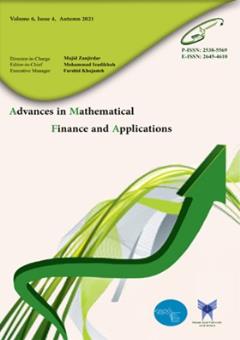-
-
-
Open Access Article
1 - Comparison of profitability of speculation in the foreign exchange market and investment in Tehran Stock Exchange during Iran's currency crisis using conditional Sharpe ratio
Mohsen Mehrara Saeid TajdiniIn the first nine months of 2018, the triple increase of dollar price made the stock market an attractive place for speculation, especially for non-professional investors. Hence, this study was aimed to investigate the profitability of speculation in the foreign exchang MoreIn the first nine months of 2018, the triple increase of dollar price made the stock market an attractive place for speculation, especially for non-professional investors. Hence, this study was aimed to investigate the profitability of speculation in the foreign exchange market (dollar) and to compare it with investment in three indices of sugar, oil products, and basic metals. First, the conditional Sharpe ratio was calculated separately for these four assets. Then, six investment portfolios were developed for these four assets. The results showed although dollar speculation with mean daily return of 0.6% had the highest return among the ten investment assets, dollar speculation was ranked last, or tenth (0.096) in terms of performance and profitability by considering the standard deviation or daily conditional risk using conditional Sharpe ratio. Moreover, the results indicated that from among the six portfolios with equal weight, three investment portfolios consisting of merely Tehran Stock Exchange indices had a better performance than three investment portfolios comprising dollar speculation and each stock exchange index. It was also found that the risk of lack of capital diversification by investors was higher than that of accepting a higher-level risk. Manuscript profile -
Open Access Article
2 - Past-oriented behavioral bias: A study on S&P & TEPIX index-es
Mohsen Mehrara Saeid Tajdini Jamal Maghsoudi Majid Lotfi Ghahroud Niloufar Ebrahimiyan Farzad JafariBehavioral finance had been becoming a fast-growing field of study in the past few years and because of the importance of investors' behavior in market performance, it's extremely noteworthy. By studying biases from their orientation perspective, we can divide them into MoreBehavioral finance had been becoming a fast-growing field of study in the past few years and because of the importance of investors' behavior in market performance, it's extremely noteworthy. By studying biases from their orientation perspective, we can divide them into two major groups, past-oriented, and current-oriented biases. In this research, a model had been developed for the past-oriented behavioral bias, which is closely related to the random walk theory. The research sample included the daily price information of 9 different industry indices in the Tehran Exchange Price Index (TEPIX), the index of 50 Top Companies in the Tehran Stock Exchange, and the S&P index in the New York Stock Exchange from 03/25/2011 to 03/19/2019. The results of the ARIMA model based on Markov switching models were measured for the degree of rigidity of these indexes by random walk theory, and then the effect of past-oriented behavioral bias was calculated in each of these 12 indexes by developing a new model. The results indicate that the cement index had the highest past-oriented behavioral bias (57%), followed by the top 50 companies index (46%), chemicals (41%), and oil product index (12%). However, the S&P index had no past-oriented behavioral bias. Manuscript profile
List of Articles Mohsen Mehrara
-
The rights to this website are owned by the Raimag Press Management System.
Copyright © 2021-2024


